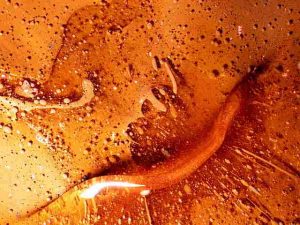What is the Best Source of Lecithin for Baking Edibles?

Lecithin is a critical binding ingredient for baking cannabis-based edibles. While lecithin is found naturally in a number of products, it’s important to know where you can source the ingredient so that you get all of the benefits without all of the chemicals.
Why is Lecithin Important for Baking Edibles?
Lecithin is commonly sourced due to it being a food additive. Some of the most common sources include soybeans, sunflower seeds, eggs, and even avocados. It has proven to be a popular dietary supplement because of the health benefits that it offers (including lowering cholesterol and reducing anxiety).
When you are baking edibles, it’s important that you have a “glue” that keeps everything together. Lecithin has been a successful binding agent for a number of products, and cannabis edibles are no different.
Particularly when you have both oil and water, they naturally oppose one another. As such, you need an emulsifier to keep them together – and that’s where lecithin comes into the picture.
Think about all of the different foods that include oil and water – cheese, salad dressing, cake, chocolate, and more. If you look at the ingredients of anything that is made, you’ll almost always see lecithin.
Particularly when you are dealing with edibles, you need to make sure that they are easy to digest. Lecithin has actually been used as a supplement for those with liver and gallbladder disease to aid in digestion. It’s a natural choice as a binding agent and emulsifier.
People expect good things from the edibles that they consume. It has to be tasty, and it has to be stable. No one wants to find that their edible crumbles in their hands the moment they take it out of the packaging.
Lecithin offers a few benefits to edibles:
- Smooth consistency
- Easy to form
- Improves shelf life
There’s another benefit that is specific to cannabis – lecithin increases the bioavailability so that the cannabinoids are absorbed into the body more effectively. It ensures that the edibles feel more potent. Many tend to allow people to feel the effects faster and stronger than when lecithin isn’t added.
How is Lecithin Added to the Edibles?
When you start baking edibles, you are likely to work with a recipe. Where does lecithin fit in if it’s not clearly a part of the recipe? There’s a bit of testing that is involved. However, you can decide how you want to source the lecithin, too.
There are some ingredients that naturally have lecithin in them – and this can be enough to provide you with the binding that is necessary. Such ingredients include egg yolk, soybeans, and sunflower seeds.
But what if you don’t want these foods in whatever it is that you’re cooking? That’s when you need to obtain lecithin as a straight ingredient to mix into your batter or dough.
Typically, you will add one teaspoon of lecithin for every one cup of liquid that goes into the recipe, whether it’s water, milk, oil, or something else.
You will need to focus on the consistency as well as the flavor to determine how much lecithin should go in so that you can perfect the recipe. You won’t want to use more than a tablespoon for every cup of liquid, however.
Sunflower vs. Soy Lecithin
The two most popular ways to obtain lecithin are from sunflower or soy. There are pros and cons of each, so it’s important to know what your options are.
Soy is a readily available, affordable source of lecithin. In order to get the lecithin out of the soybeans, various chemicals are used. Acetone is one such chemical, which can be an undesired additive. Additionally, soy is almost always genetically modified – and many people are looking to consume fewer GMOs, not more.
Sunflower seeds are a more popular source of lecithin in recent years. First, it has gained popularity because of people looking to get away from soy, a common allergen. Second, sunflower is not genetically modified, so you don’t have to worry about GMOs.
Lecithin is obtained from sunflowers through the process of cold-pressing, not through chemicals. Since you are creating things that are going to be consumed, it’s important to look for a healthy option.
Knowing the options that are available allows you to stay in control of what you are offering people. Many people looking to consume cannabis edibles will have questions. They’ll want to know about the various allergens and what your products contain. By using sunflower, you can offer a non-GMO product without risking people consuming any chemicals, which can have harsh side effects.
Choosing a Quality Lecithin Product
Whenever you are baking edibles to market to consumers, it’s important that you focus on a fresh, high-quality product. When you find lecithin, it should be Halal, Kosher, and Food Chain certified so that you can appeal to the masses. Further, it should meet the Global Standards for Food Safety.
Soy is the most common form of lecithin to obtain. However, it can also lead to allergies and other issues because of the way in which it is sourced. As such, you need to make sure you have access to higher quality lecithin, such as one that is sunflower-based.
Regardless of whether you are making cookies, cakes, chocolate bars, crackers, or something else, you need to make sure that lecithin for baking is sourced from a reliable company, such as National Lecithin. It will allow you to bake with greater confidence knowing that every ingredient is of the highest quality.
The extraction process should be cold-pressed so that you don’t have to worry about harmful chemicals.
Lecithin is available in powder and liquid formats so that you can bake in a way that allows you to create delicious and effective edibles for your customers.
Now that you know about the various forms of lecithin, you can make more informed decisions about how to incorporate it into your edibles. You’ll have healthier options for your consumers and your edibles will be more stable.






